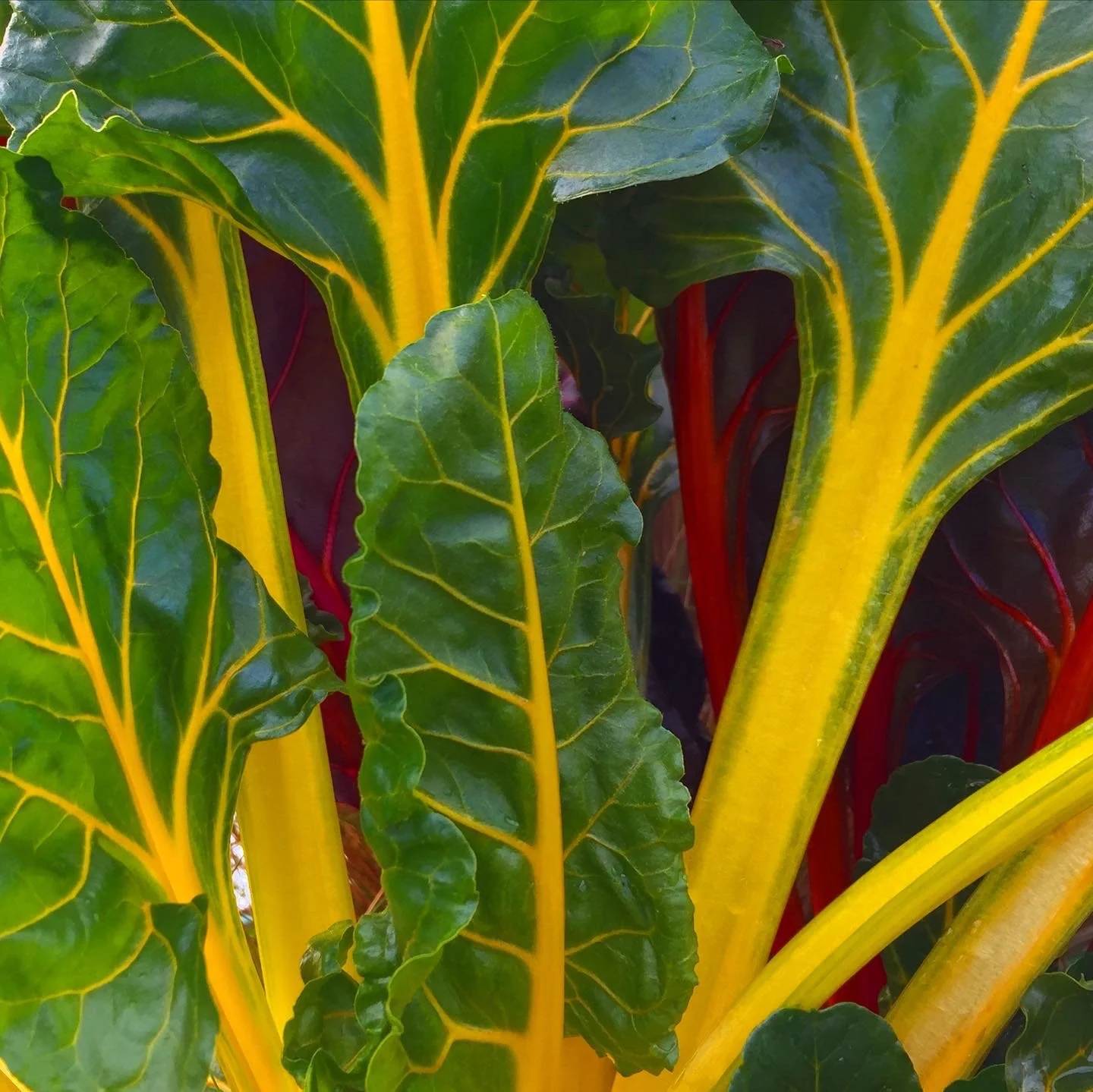Is there an edible more beautiful than the brilliantly colorful Swiss chard? This was the plant that made “foodscaping” an easy sell. Look no further than every garden center in fall where chard is sold next to pansies and snapdragons as a cold hardy, winter interest option.
Known botanically as Beta vulgaris subsp. vulgaris, chard has a confusing history with naming. It was first described in 1753 by Linnaeus and is divided into two rank-less cultivar groups: Cicla Group for the leafy spinach beet, and the Flavescens Group for the stalky Swiss chard.
The origin of the adjective "Swiss" is confusing. Chard is not native to Switzerland, as it’s a coastal plant. It is used in traditional Swiss cuisine, namely in a dish called campun, which I’ve never had but plan to make as I have an abundance of colorful foliage destined for the kitchen.
Chard is one of the hardiest leafy greens, with a harvest season typically lasting longer than kale, spinach, or lettuce. I start seed in September and the plants grow all winter into spring in the ground and in containers. Some years it even persists through the summer, though the flavor is quite bitter with warm temperatures.
In addition to being pretty, chard has highly nutritious foliage with a significant concentration of calcium along with vitamin K, magnesium, potassium, manganese, iron, and vitamin E. These are all essential elements needed to maintain good health. It is noted for its many benefits ranging from helping to control diabetes, regulating blood pressure, building stronger bones, reducing the risk of cancer, and improving blood circulation. It is even credited with helping improve your complexion and strengthen hair follicles.
It has been used in cooking for centuries and can be eaten raw chopped in mixed salads or cooked as an addition to stir fries and soups. A simple google search will reveal thousands of delicious and nutritious recipes for you to enjoy your homegrown harvest.
Chard has shiny, green, ribbed leaves, and petioles that range from white to yellow to red, depending on the cultivar. And there is no shortage of great varieties to grow, thanks to breeders world-wide and non-profit organizations like the National gardening Bureau that work to bring the best cultivars to commercial growers and home gardeners.
A few years ago, I had the opportunity to tour the California Vegetable Trials where chard was a star! A few of my favorites are 'Fordhook Giant', as well as red-ribbed forms such as 'Ruby' and 'Rhubarb’. 'Rainbow' and ‘Celebration’ are fun seed mixes that have all different colors included. ‘Peppermint’ has white and pink striped coloration to the petioles that look gorgeous all winter long.
Like most vegetables, chard is best grown in full to part sun in moist, well-drained soil. It can be grown in the ground, in raised beds, and even in containers, hanging baskets, and window boxes. If you have never grown or eaten Swiss Chard, let this the be motivation for you to try something new. I promise you won’t be disappointed!







